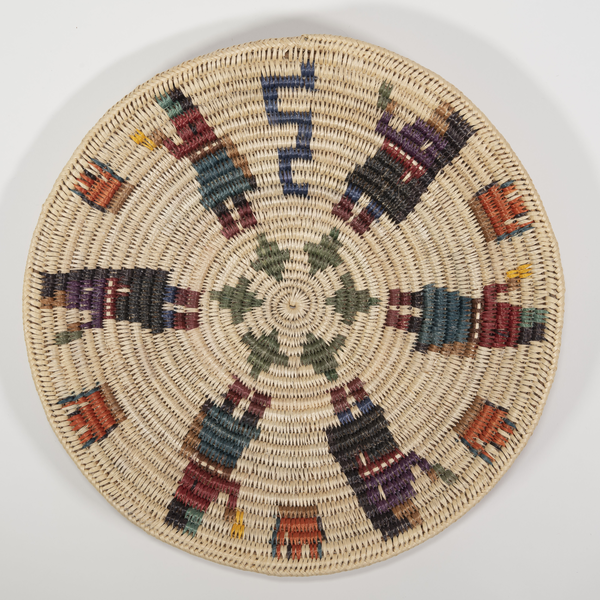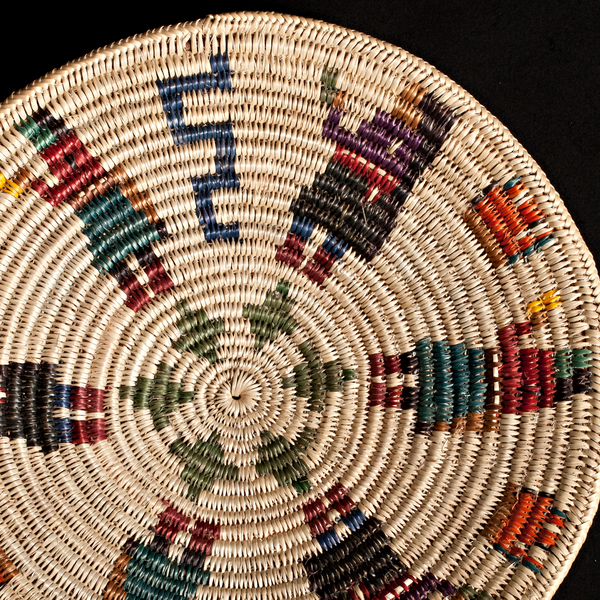Mountain Chant
The nine-day Dził Biyiin (Mountain Chant) is a healing ceremony held in late winter “at the end of the thunderstorms, but before the spring winds arrive.” Marking the change in seasons, it is sung to cure diseases and to restore hózhǫ́ (harmony and balance) to the community. Because holding this ceremony at another time could result in misfortune, timing is critical. The final ceremony of the Mountain Chant, the Iłnáázt’i’ (Fire Dance), has been portrayed on baskets both Mary Holiday Black and her daughter, Lorraine Black. The Mountain Chant recounts the story of Dsilyi’ Neeyani who was captured by the Utes while hunting one day. He escapes with the help of the Diyin Dine’é (Holy People) and learns many important rituals on his return journey, like how to make the sand paintings used in the Mountain Chant and how to handle fire without getting burned. Upon his return, it takes Dsilyi’ Neeyani four days and four nights to tell the story of his wanderings. The rituals he shares are so compelling that messengers are sent out to invite guests to witness them.




